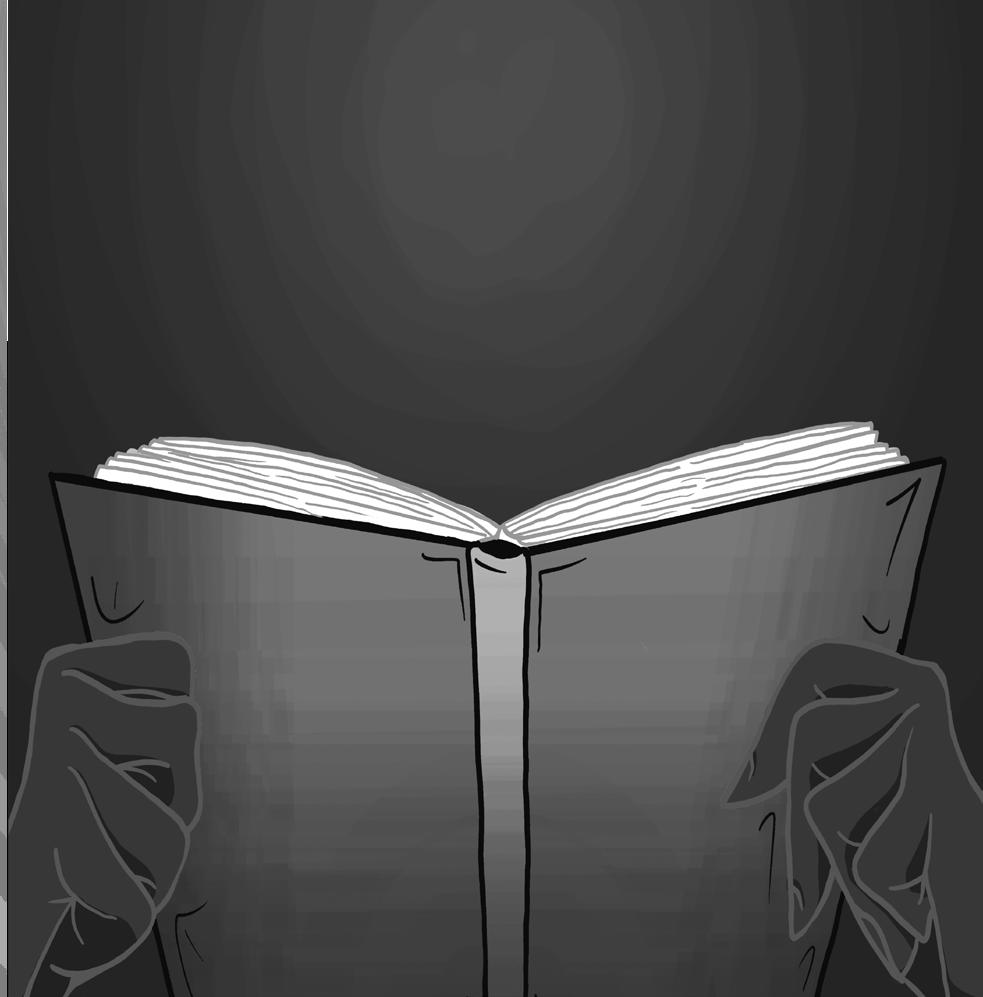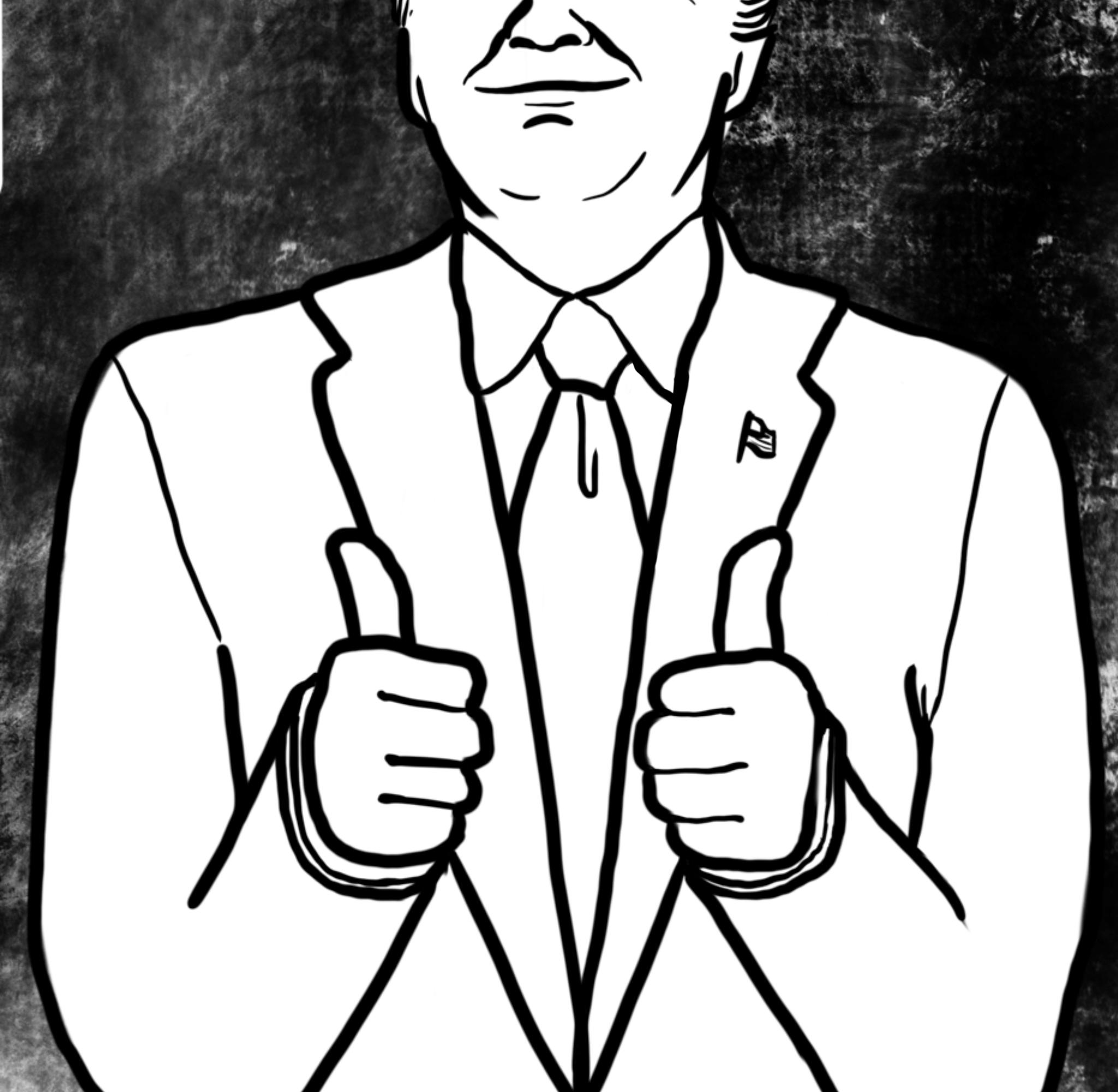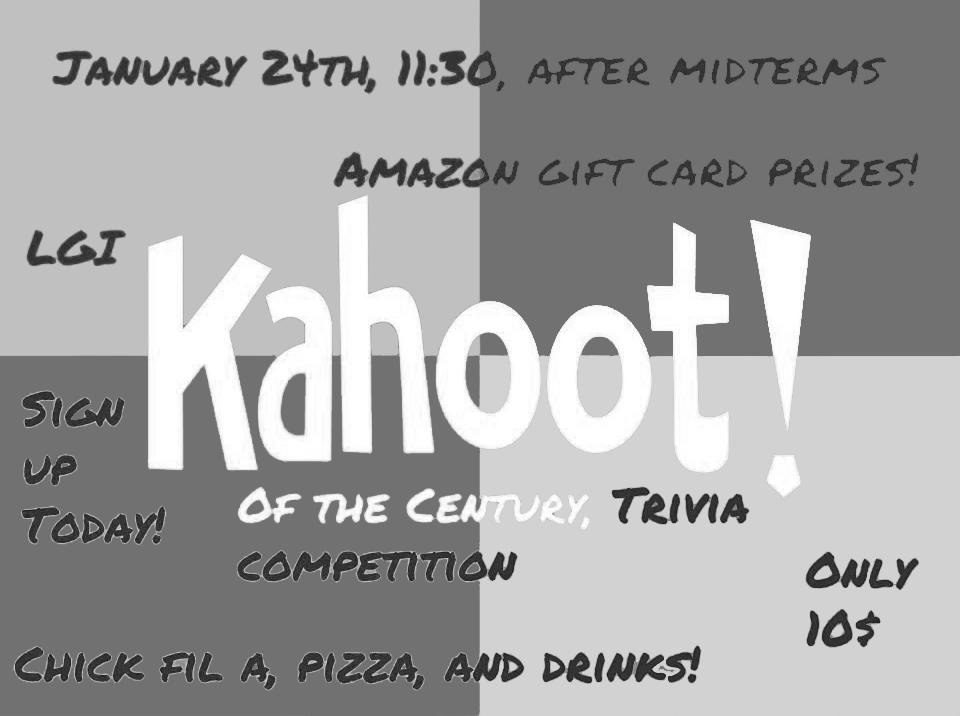
28 minute read
One of the colors of the stripes
Features Loe aond the globe The Merionite
Claire Wang ’23
Advertisement
Celebrated all around the globe, Valentine’s Day marks the time to show your affection and love towards others close to you. A day showered with flowers, sweets, and romantic comedies, and shelves lined with stuffed animals and boxes of chocolate. Although these may be the staples of Valentine’s Day in the U.S., other countries have alternative and unique ways of declaring their love. The global holiday is celebrated differently in other corners of the world. For example, in Denmark, lovers exchange pressed white flowers called “snowdrops,” along with handmade cards as a replacement for red and white roses. Traditionally, gifts are given on the single day of February fourteenth, but this is not the case for the people of South Korea. South Koreans have a series of gift-giving days that span across three months. It begins on Valentine’s Day, where women offer their partner a variety of sweets and presents. However, a month later on March 14, the men return the favor with all sorts of gifts. The final
-Anika Wolchuk ’20
day on April fourteenth is dedicated to those who do not have a relationship to celebrate. They spend the day eating black bean-paste noodles weeping about their lonesome social status. This is similar to the singles in Lower Merion, but instead of black noodles, a pint of Ben and Jerry’s ice cream often helps students cope with their solitary lifestyles.
Further, in England, candies and little presents are left on the porches for children on Valentine’s Day from “Jack Valentine,” the Santa of February 14th.
- Nehama Dorms ’19
Graphic by Chris de Santis ’20
On a brighter note, Valentine’s Day has a particular significance in the Philippines, because many couples gather their friends and families to get married on that date. Venues and gardens are packed as new couples unite and old lovers renew their vows. Instead of giving gifts on the 14th, the Welsh celebrate their patron saint of lovers called Saint Dwynwen on January 25. It is also customary to present their beloved ones with carved wooden spoons festooned with patterns and designs holding several meanings. For instance, the symbols engraved can contain different connotations like luck, which is represented by a horseshoe.

Additionally, for women in South Africa, displaying affection and making those they admire aware of their endearment is a simple process. The ancient Roman tradition of literally wearing hearts on their sleeves and pinning the names of their love interests is extremely common. These customs of showing admiration may seem unusual and different to what we are used to in Lower Merion, but they all share a similar underlying component of appreciating and celebrating love. Around the corner is most likely a Wawa where those who are forgetful can purchase last-minute chocolate roses and candy hearts. At LM, couples traditionally go to romantic dinners at restaurants such as Continental and Hymies, or enjoy fondue at The Melting Pot. Some may travel to the outdoor ice skating rinks in Philly or the natural scenery at Longwood gardens. However LM students choose to spend this Valentine’s Day, the sentiments behind the celebrations will likely be similar to those of lovers’ around the world.
Crushes or grade-crushers?
Julia Russel ’23
School can place many disadvantages and advantages on adolescent relationships, and relationships can have similar effects on one’s academics. Although there’s an expected level of stress on both partners in any given relationship, school can immensely heighten stresslevels, which can then be taken out on said relationships and be harmful to their well-being of the parties involved. From homework to tests to stress-inducing projects and speeches, there is a lot of work for students to complete in a single school week, wreaking havoc on the stability of said relationships. Another disadvantage of high school relatioships are the distractions an active student faces throughout the school year. After discussing with various LM classmates who are currently in a relationship, I found they shared the sentiment that finding time for their significant other was more difficult during the school year. School requires about seven hours of a student’s day at a minimum, and when extra-curricular activities and athletics are added, it can be nearly impossible to schedule time to foster or develop a relationship. Despite the negative influences academics may

pose on a relationship, it is evident the converse is true: relationships can pose major threats on academic prosperity as significant others can easily distract students from doing their school work. Further, avoiding one’s work by spending time with another can increase stress levels, as it the looming threat of work only intensifies when put aside. Although significant others serve as temporary academic distractions, once back in an academic environment, the weight of the assignments surely returns. It is taxing to balance all the activities and school work along with time for your loved one as well. This can eventually affect students’ performance in school. If a student cannot manage to balance academics and a relationship, most would agree that he or she should not be in one. On the contrary, many LM students have expressed that their relationships actually encourage success in school. For many, building healthy and strong relationships led both members of said relationship to be much more motivated, as their stable mentalhealth promoted academic prosperity. It it easier to the understand the impact of academics on relationships with the control of summer: a long, stress-free time period that can foster closer and stronger bonds in a relationship. Freshman Inbal David noted, “in the summer there is no need to balance anything, so [my boyfriend and I] always have time to be with each other.” This was beneficial for their relationship. She continued, “but during the school year we need to set aside time to work on homework, after school activities, etc.” which can sometimes be strenuous. Consciously deciding to prioitize school over romantic relationships is essential for some, as a relationship can tend to bring negative effects upon school work, and decrease participation in clubs and extracurriculars. However, some people do benefit from spending time with their significant others, as they might be inspired and motivated to particpate more and work harder. Everyone is different— for some it might be best to stay out of relationships in high school, and for others it is great way for them to develop emotionally and socially. Either way, high school can definitely have a very large impact on relationships.
Soulmate or snap-mate?
Nolan Shanley ’23
As the years go by, Valentine’s Day has gained more popularity as a holiday. “Dating” has never seemed more relevant in teenage society than it does today. Back in the day, Valentine’s Day was definitely less popular as far as how many people celebrated it, but it may have been more meaningful to those who did engage in celebration. As shown in the movies, the original Valentine’s Day tradition was for a boyfriend to show up to his girlfriend’s house with roses, a box of chocolates, and a cute teddy bear. Yeah, yeah… we’ve all watched those scenes in films and TV and cringed. But nowadays… things have completely changed. Back then, relationships were in some ways much less communicative, as they didn’t have access to all the methods of communication we do today. Additionally, couples were less publically-expressive, however social media has definitely lowered the comfort-threshold for many couples. Today, Valentine’s Day tends to be celebrated with social media in mind, sometimes over anything else. It’s not uncommon to see giant bouquets bought simply for bragging rights on Instagram. As times have changed, love has changed with it. I know that when many parents met, they got to know each other well before they started a relationship, but now people can get into a relationship only by talking to each other through social media platforms, or texting.
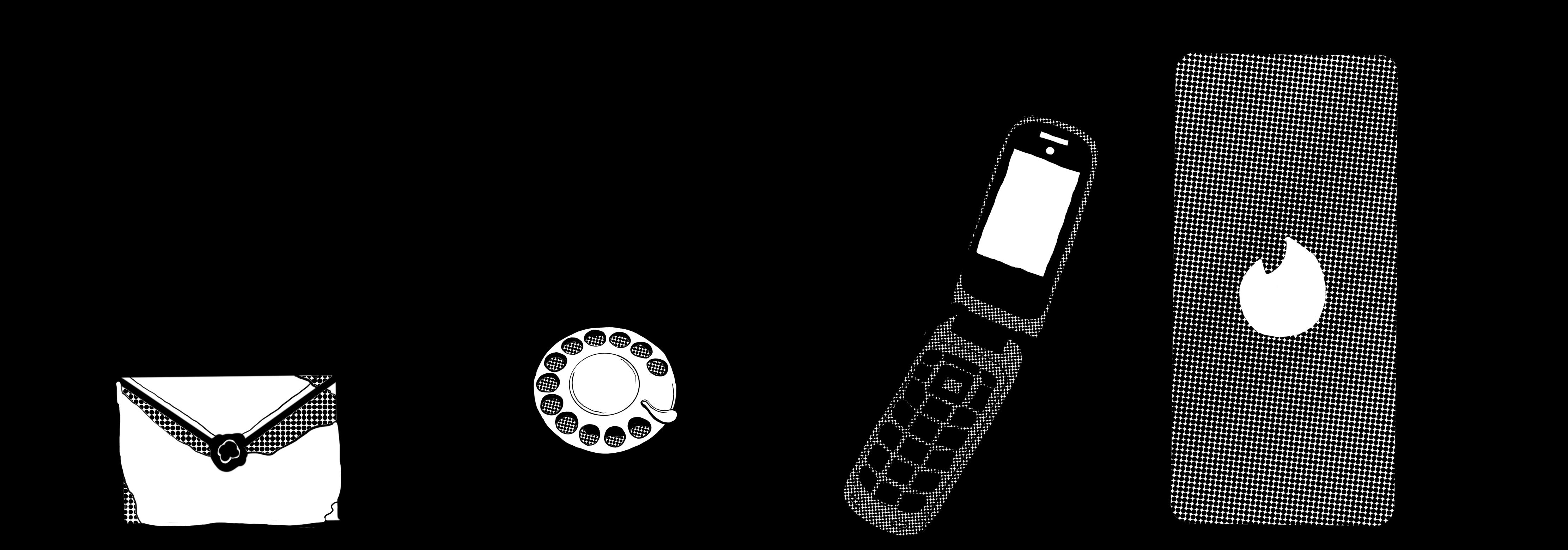
For example, many people’s #1 best friend on Snapchat might not be their actual best friend, or even someone they’ve ever met before, but instead someone who they have a crush on. The way people created a relationship in the past involved more face-to-face communication, while nowadays apps like Snapchat and Instagram are chiefly used for forming relationships, they have almost taken over. This sometimes leads to the basis of a relationship being on aesthetics. Some of these relationships can be toxic and fake, resulting in devastating heartbreak. It is upsetting to see how relationships and love have evolved to not carry as much significance and importance as they did in earlier times like my parents experienced. It can also be gathered, however, that despite social media’s evolution and interference, societal progress and acceptance has been vital for healthy relationship forming.
According to the Center for Disease Control and Prevention (CDC), in 2019, approximately 27.5 percent of high school students reported that they had used electronic cigarettes—a type of vaping product—in the past thirty days. In addition, 5.4 million middle and high school students claimed that they frequently use these products. Vaping, the act of inhaling vapor through the mouth from a battery-operated device that vaporizes liquid, has become progressively common amongst student-athletes, especially those involved in endurance-related sports. The increased use of these addictive products has proven to have detrimental efects on the academics and overall health of youth nationwide, with the brunt of these concerns on student-athletes. As LM Aces Boys Soccer defender Sam Hecht ’21 wisely remarked, “it’s a shame that vapes were ever thrust into the spotlight as the likelihood of kids smoking cigarettes before games does not even compare to the likelihood of them vaping before games.” The growth in prevalence of vaping as opposed to smoking cigarettes can primarily be attributed to the artifcial favor-flled pods and the common fallacy that the health risks accompanying them are minuscule or even nonexistent. Although many of the health implications remain unbeknownst to doctors, studies have found that pods from electronic cigarettes can lead to cardiac disease, lung disease, and invoke harm to maturing adolescent brains. For student-athletes, the consequences are thought to be even harsher than their non-athlete peers. As a 2017 study by Massey University discerned, teens involved in athletics that are addicted have been known to become tired at an accelerated rate during practice and games as a result of the efects that vaping has on the lungs. When an athlete becomes tired quickly,they lose the ability to execute at their full potential and will carry out the performance with perfunctory efort. Furthermore, Dr. Jefrey Spiegel, a professor of otolaryngology at Boston University School of Medicine, studied the repercussions of vaping and determined an even more shocking corollary. Spiegel ascertained that vaping interferes with the human body’s ability to heal properly. Therefore, athletes that use these products may face additional risks such as lengthened injury recovery time as well as the possibility of unsuccessful training. Building muscle, one of the largest components of strength training, is completely contingent on the replenishment of supplementary, stronger muscles to replace torn ones as a result of aggressive training regimens. Essentially, by vaping, an athlete’s training is not as efective as it would be otherwise and thus their performance on gameday will sufer as well. For numerous athletes, like sophomore Henry Bard, those consequences are simply not worthwhile. Bard, a player on the Aces Basketball and Lacrosse teams, stated that he “always aim[s] to play at the highest level and that abstaining from vaping will help [him] accomplish that.” These limits on athletic performance—in addition to the health rewards that accompany those that desist from vaping—are precisely why school ofcials and coaches have begun to punish students for it. Unfortunately, schools nationwide have faced immense troubles in determining appropriate penalties for students caught vaping. According to the Addiction Center, it’s becoming increasingly difcult for adminstrations to hold students accoutable for these ofenese. Athletic Director of Framingham High School Paul Spear has found his school, located in the Greater Boston metropolitan area, to be no outlier. Spear reported that student-athletes who have been caught vaping are sent to his ofce weekly and are typically suspended for multiple games. According to the Addiction Center, while acknowledging that missing games can certianty impede a player’s ability to play collegiate sports, in an interview, Spear noted that “the worst part of [his] job is telling a student-athlete they can’t compete because they’ve done something that precludes them from being part of their team.” Nonetheless, he recognizes that students need to understand that the dangers of e-cigarette usage are not worth immediate, short-lived satisfaction. This brief burst of appeasement that has sparked the popularization of vapes among youth has ultimately led the U.S. Surgeon General, Dr. Jerome Adams, to consider it an epidemic. An epidemic, despite what many believe, that has left athletes at the center of the crisis. Spencer Rosenbaum ’22 Athletes escape the vape Concussion circumvention at LM
Alex Frankel ’22 If you’ve ever had a concussion, you are familiar with how burdensome managing recovery can become. In recent years, concussions have grown to be a leading issue in sports at all levels, from youth soccer to professional football. Rising concerns about brain damage in children and teenagers has many individuals, especially parents, speculating about the safety of school sports. Luckily, LM has an efective protocol set in place to order assure any athlete diagnosed with a concussion is able to safely return to their sport in a timely manner. This protocol and concussion management method is what keeps LM athletes protected from the harmful long term efects that concussions may bring. One of the most trusted and widely utilized methods in our school district involving concussion management is ImPACT testing. Prior to any sort of physical activity involving a school sport, student athletes must undergo a series of computer tests pertaining to memory, reaction time, and other cognitive abilities. These tests set a baseline for each athlete’s cognitive abilities, and when a player is hit in the head in any fashion, another ImPACT test will tell whether or not the collision has altered brain fuctionality. Once an athlete has been diagnosed with a concussion by LM’s training staf, it is important that they follow the school’s concussion protocol in order to recover from their concussion safely. The standard protocol for concussion management used at LM, usually referred to as Return-to-Play protocol, is broken down into fve stages, with each stage gradually re-introducing athletes back into their normal playing routine. After being removed from the game to prevent any further head collisions, it is important to follow these safety measures in order to return to your respective sport in a timely manner without risking further injury. Stage one of the Return-to-Play protocols is during the frst two to four days after sufering a concussion. During this time, the athlete must be under “complete rest”, which involves staying away from as much physical and mental activity as possible. Depending on the severity of an athlete’s concussion, they may be kept out of school for a few days. During stage two, an athlete is to follow up “complete rest” with “reasonable rest” meaning that they can begin light exercise and light cognitive activity. This stage can begin once an athlete’s symptoms have reduced, and they are able to function at school. Michael O’Brien, the current director of Boston Children’s Sports Concussion Clinic, explains that the purpose of this stage is to “reintroduce light-to medium-intensity exercise, which is always non-contact until they are completely recovered”. Some common activities that are recommended for stage two of the recovery process are light stretching, light aerobic conditioning, and some resistance training. Stage three of the protocols is when athletes can move onto full body exercises, basically any movement involving running, jumping, and balance. Vigorous exercise should still be avoided, as the brain is still not fully recovered from injury. This stage acts as a good segway into fully returning to action, as it allows athletes to get back into shape without causing trauma to their healing brain. Once the athlete has multiple days of success in stage three, it is safe for them to move onto stage four. At this point, they can exercise fully with maximum efort. However, the brain is not fully healed, so an athlete must still avoid contact in their activity. It is important not to rush into any contact exercise at this point to not reinjure the brain. The athlete must stay in this stage until they are cleared by a doctor. The final stage of the Return-to-Play protocol is the athlete returning to full contact in their respective sport, with clearance from a doctor, alongside being able to participate in full cognitive activities. The brain has fully healed by now, and therefore it is safe to return to maximum effort exercise. LM has implemented this protocol with long term safety in mind, as it’s of utmost importance that no student athlete suffers long term brain damage from a concussion. As the years have gone on, more and more parents are speculating about the safety of youth sports, because they want to keep their children safe from any brain damage or trauma that could happen in a contact sport. Luckily, there are safe and easy protocols that are set in place to make sure that any athlete that suffers a concussion is able to fully heal, and return to their sport without having to worry about any further injury.

School start times: an athlete’s take Infavor of the proposal Opposed to the adoption

Ben Wolf ’22 Lower Merion School District’s long-debated proposed start time changes for the elementary, middle, and high schools have been frequently discussed, their potential benefits and alleged consequences weighed. A major topic of debate has been how these changes, which could involve pushing the high school’s start and end times back nearly an hour, might affect LM’s student-athletes. With each school day slated to end at 3:25 p.m. rather than the previous time of 2:40 p.m., practices, games, and meets for indoor sports could begin at slightly later times without any significant negative impact on the daily lives of student-athletes. The solution for outdoor sports is somewhat more complicated, as weather and darkness could become a problem. To address this, the district could install lighting on school property and if necessary, athletes may miss more class time as long as they would be provided with the opportunity to swiftly make up any work they may have missed. Lunch and Learn is an incredible system that may prove to be quite useful to a large number of students who represent LM in athletics. Lack of sleep among teenagers, particularly high school students, has been a major influence in LMSD’s decision to make the aforementioned changes. The logical (and correct) conclusion is that beginning classes an hour later will allow students to be more alert, healthier, and happier throughout the day. For students who don’t get home from practices or games until 6:00 p.m. or later almost every single day, it can be difficult to finish schoolwork, spend time with family, or just relax and communicate with friends while maintaining a balanced and healthy sleep pattern. Anybody who has played a sport will tell you that it is hard to overstate the importance of a good night of sleep prior to a big game. It can be a struggle to regain the intensity needed to perform on the court or field after a nap on the bus ride to an away game or maintain focus for another few hours of practice after a grueling day of academic work. Although later practices and games would require student-athletes to get ahead of schedule on schoolwork when possible and cut down on free time when necessary, an extra hour of sleep can go a long way in energizing teenagers to get through an overwhelming day of classes and exhausting athletic events. “I would end up going to bed around the same time no matter when school ended, so the extra hour of sleep in the morning would benefit my health throughout the day,” says sophomore baseball player Ilan Tauber. Above all, it is unlikely that the district would have gone forward with the decision to change times had they believed it would disrupt or hinder the enjoyment and success of its sports teams. Its implementation is meant to aid all high school students, including athletes. The benefits of additional sleep on the health, happiness, and overall performance of student-athletes far outweigh the minor inconveniences posed by permanently pushing the high school start times back by an hour. Ellie Ward ’21 With the current scheduling, student-athletes at LM are often forced to work tirelessly once they arrive home from practice so they can finish their homework and complete any other chores that are required of them. However, if new start times are enacted, athletes will have even less time to complete their homework, and in turn will be forced to stay up later in order to finish it all. One of the most apparent reasons why the school board is considering this change is so that students will be able to sleep longer and have their sleep patterns align with professional recommendations. However, as a result of the change, students would come home from practice exhausted and then would have to complete homework later than they otherwise would, making the school board’s attempt at improving the lives of students essentially ineffective. Not only would athletes be completing their homework later, there is simply not enough daylight to fit every team into a practice schedule, especially during the fall and spring seasons. The soccer, football, and field hockey teams all share the same turf field and with the current schedule, each team is only able to practice for around an hour each day. The new schedule would make practice time incredibly slim, ultimately causing the practices to be less beneficial. In the opinion of junior athlete Ella Braunfeld, “the girls soccer team currently does not receive enough turf time. If the practice times were pushed back even later, it would be absolutely necessary that we add lights to the field. Otherwise, later school start times simply are not possible for athletes.” In addition, the amount of time that teams get on the turf is not the only issue that would be exacerbated by later start times. Sports such as crew, squash, and swimming would also be greatly affected. For example, the squash team practices at the Cynwyd Club, a privately owned club, strictly from 3:15 to 4:30 p.m. because the coaches have lessons to teach to club members after training. So, if later start times were added, squash practice would possibly be cut shorter or have to cut into the Cynwyd Club’s lesson times. Both of these scenarios are far from ideal with respect to the betterment of the team and the generosity exhibited by the Cynwyd Club throughout the years. As the schedule currently permits, athletes are excused from class generally around 2:15 p.m. to attend away matches. Since the Central League is currently not considering a change in game schedules, it would be highly unlikely that the time for away games would be able to be pushed back; it would disrupt the rest of the schools in the conference and how they handle their away matches. If after-school games or matches were to remain at the same time, student-athletes would be forced to miss significant class time in order to participate in athletic competitions. This puts athletes at a severe disadvantage compared to students who do not engage in sports, since athletes will have to absorb the same amount of material, only in a shorter amount of time. Considering the plight it would put on athletes from a standpoint of ample practice time, study time, and getting enough sleep at night, it would be totally unreasonable to expect a seamless transition to the proposed schedule if adopted next year. Graphic by Chris de Santis ’20/Staf Changing the school start time pushes back school activities, which means that athletes have to play at later times.
A Super Bowl of frsts Elijah Bloch ’22

Super Bowl LIV was one of the most anticipated sporting events of the year and many LM students may agree it certainly lived up to the hype. The match was between the offensive power in the Kansas City Chiefs, led by quarterback Patrick Mahomes II, and what was said to be the best defense this season by the San Francisco 49ers. From an LM standpoint, many football fans were rooting for the Chiefs, as their coach, Andy Reid, is a former long-time coach of the Philadelphia Eagles. Reid is notorious for his many winning records during the regular season, but come playoff time, his teams have underperformed time and time again. This year however, things changed as the Chiefs notched a fourth quarter comeback after being down 20-10, led by Mahomes (who would later receive Super Bowl MVP) and the pass-first offensive style of Andy Reid. Kyle Shanahan, coach of the 49ers, suffered from the devastating loss. During Shanahan’s time with the Atlanta Falcons in 2017, his team reached the Super Bowl, blowing a 28-3 halftime lead against the New England Patriots. This year made it the second Super Bowl lead forfeited in just the past four seasons for Shanahan. Given that the Chiefs were able to put together such a comeback with only six minutes left in the game, not only did coach Reid receive his first Super Bowl victory, but Mahomes also became the youngest player to win both MVP of the NFL and MVP of the Super Bowl. Along with the excitement of the game, Super Bowl LIV came with plentiful entertainment. With the popularity of the event consistently on the rise, the average cost for a 30-second commercial during this year’s Super Bowl was around 5.6 million dollars. In addition to the commercials, during this year’s halftime show, Jennifer Lopez and Shakira commanded the stage and captured the attention of 103 million viewers, which was a four percent viewership increase from last year. With numerous firsts occurring during this year’s Super Bowl, it was surely a game to remember, and many fans are happy for former Eagles coach Reid to have finally earned his Super Bowl victory. Photo courtesy of Visit Philadelphia Andy Reid drowns in confetti, celebrating his Super Bowl victory.
A balancing act
Sophie Meyer ’20 Arts & Entertainment Editor
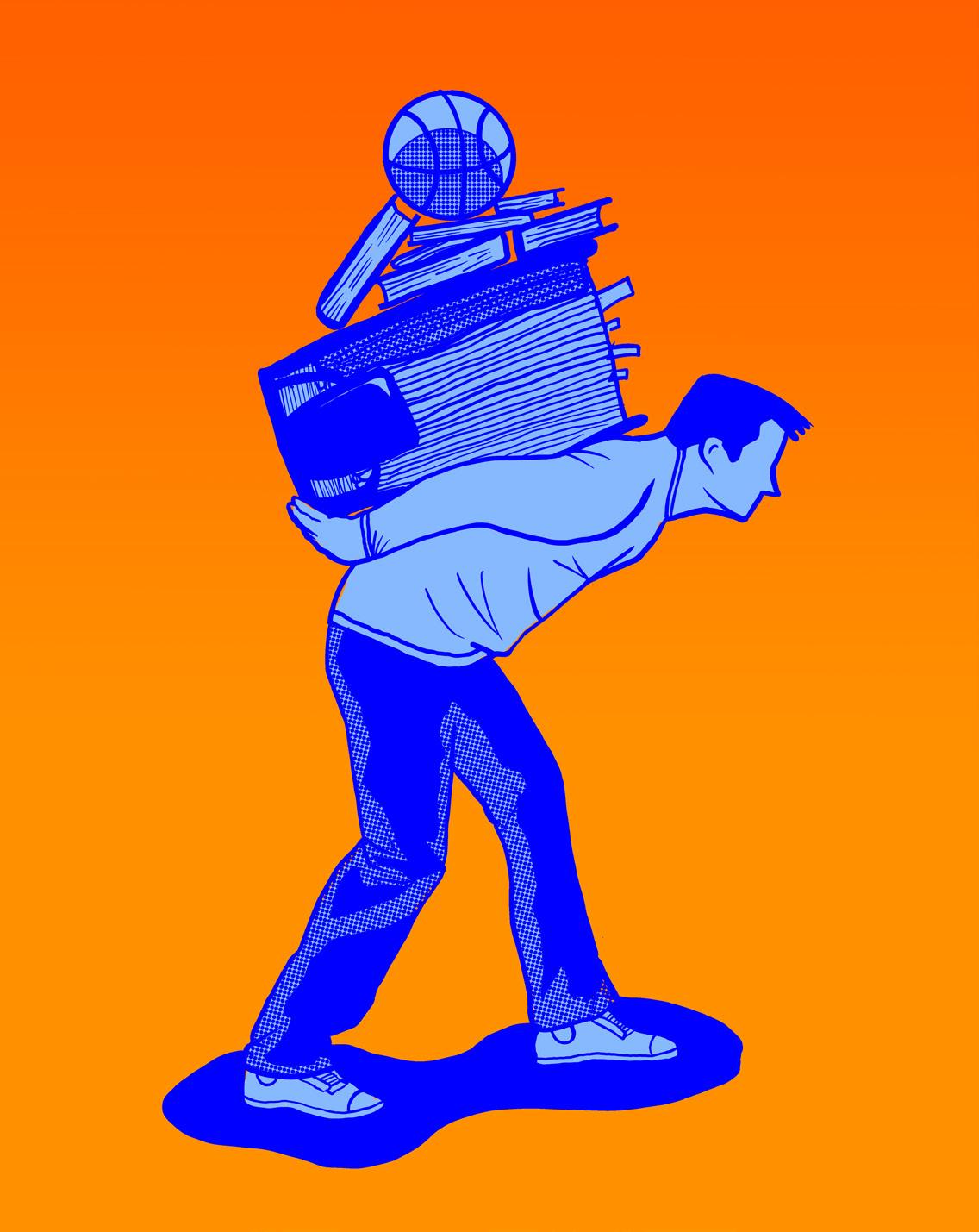
Six classes, hours of homework, and the bell ringing at 2:40, only marking the halfway point of the day; this describes a typical daily schedule for student athletes. The stress of having to manage a difcult schedule can be overwhelming for many students—imagine getting home at 6:15 pm and still having hours of work ahead. With the time it takes to relax, eat dinner, do chores, and fnish homework or study for exams, many athletes don’t get to bed until quite late, sometimes with early morning practices looming a few hours later. They have to get up the next day, and do it all over again while forcing their eyes to stay open despite their immense fatigue. On top of this, athletes often participate in other extracurricular activities. Further, as LM is a competitive school, individuals are often being pressured to take AP classes or fll their schedules up with challenging courses. Having to worry about intense workloads on top of games or meets or even late practices can be grueling. So what can student-athletes do to help balance this schedule? Some of LM’s students have the answer. Inga-Marie Cohen ’20 says, “take full advantage of free periods to do extra work, and be present during classes so you don’t fall behind.” Having frees can be a huge help to balancing a full schedule. Sometimes people feel pressured to take seven classes and fll up their schedules, but taking six challenging classes and leaving room for frees is perfectly acceptable. Free periods or study halls offer a break in one’s schedule, for either relaxation or completing school work. Having a mental break in the day can be extremely benefcial to any student. Another way students like to balance sports and school is by having a planner. Kierrah Grier ’20 advises, “I really like having a planner to make sure that I stay organized and on top of my assignments.” Having a planner, whether it be a physical planner from Staples, a website such as mystudylife.com, or Post-it notes that can be kept track of, can be a huge help to students balancing heavy workloads and after-school clubs.Writing down homework assignments, their due dates, upcoming tests, and keeping note of teachers’ ofce hours can make a huge diference in the balancing game. Usually, teachers can also be a huge help when it comes to successfully managing school and after-school commitments. Many teachers will be lenient when it comes to big projects or tests occuring after a game day, and will even actively help athletes stay on top of their game by telling them test days in advance or giving extra time for homework if they know the student is stressed out about their schedule. Despite the fact that most teachers will provide some lenience, it’s best to get to know teachers and know which ones are more likely to help out with stressful schedules. Not all teachers will be sympathetic. Dahlia Levine ’20 is a current senior, captain of the girls’ crew team in the fall and spring, and captain of girls’ swimming throughout the winter. Levine shared her point of view on how to best manage sports and school, noting, “honestly, it’s all about prioritizing and not procrastinating.” She also mentions she likes playing sports after school and in her free time, they help her “focus and that most students athletes are used to working hard all the time so balancing athletics and school work is just a part of the grind.” Through and through, managing a fully stocked schedule and sports can be very challenging, so it’s important not to go overboard when scheduling your classes. Sure, it looks great to have all honors and three or more APs and be the captain of your sports team, but if you don’t do well in your classes, it’ll only hurt you. Besides not doing well, your mental health should be a priority during the school year. If you’re constantly stressed about tests and projects for all of your hard classes and you’ve got practices every day for hours, chances are your mental health will sufer. It’s best to create a balanced schedule with free periods that allows you to have some down time during the day so your after-school activities don’t burn you out. While having this perfect balance between your important school work and enjoyable competitive sports can be challenging, playing sports can be a great way to motivate you and give you a chance to explore your interests outside of the classroom. Graphic by Chris de Santis ’20/Staf Participating in a sport is a large commitment, so it is important to know how to manage your time.
Freshman Sam Brown What sport(s) do you play? Basketball What is your greatest athletic achievement? Don’t know, I don’t think I’ve had it yet What’s your favorite Valentine’s Day gift? Defnitely Fun Dip If USA was represented by food, what would your favorite state’s food be? Pennsylvania would be represented by Cheesesteaks Photo courtesy of Sam Brown ’23
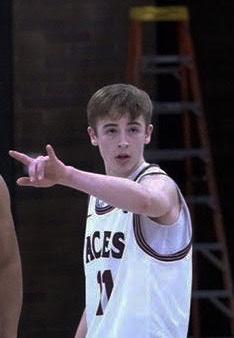
Junior Ava Cliford What sport(s) do you play? Indoor and Outdoor Track What is your greatest athletic achievement? Going to Penn Relays, it was a really cool experience! If life were a video game, what would be one of its cheat codes? Edit, undo for whenever something goes wrong What is your favorite holiday movie? Our Times Sophomore Aaron Levine What sport(s) do you play? Waterpolo, Swimming, and Ultimate Frisbee What is your greatest athletic achievement? Getting the 100 and 200 freestyle records Who is your favorite president and why? Abraham Lincoln because he had that very funny hat that he always wore What’s your favorite Valentine’s Day gift? A very fancy box of chocolates Photo by Bob Baumann Photo courtesy of Ava Cliford ’21
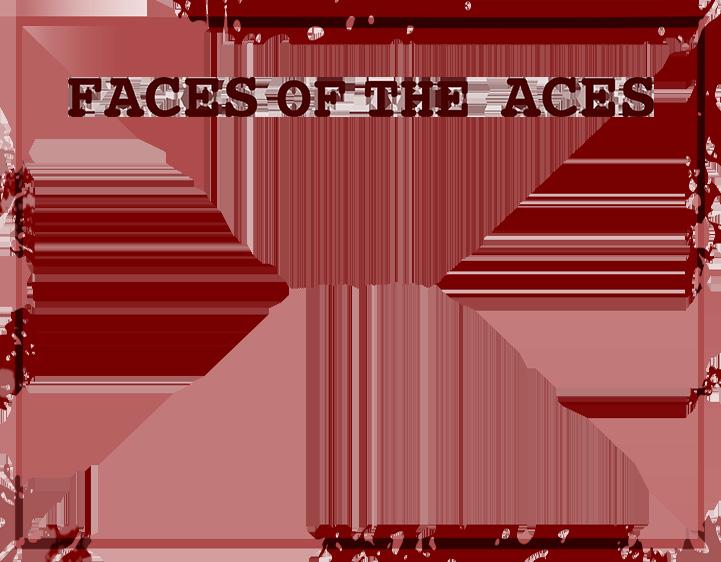
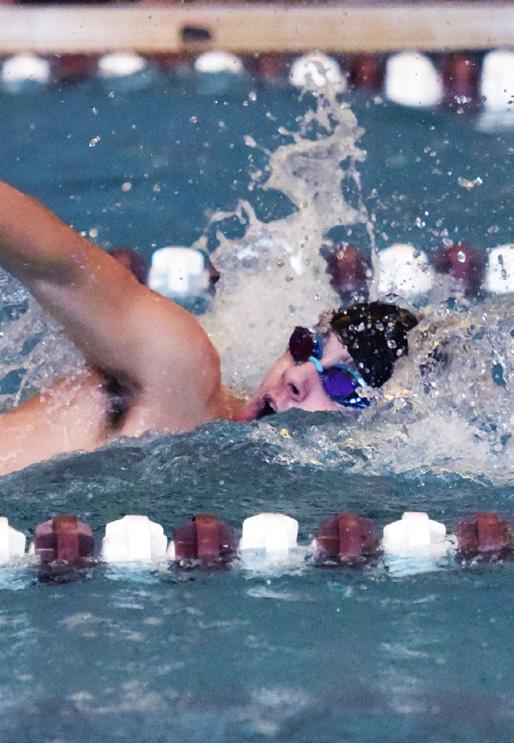
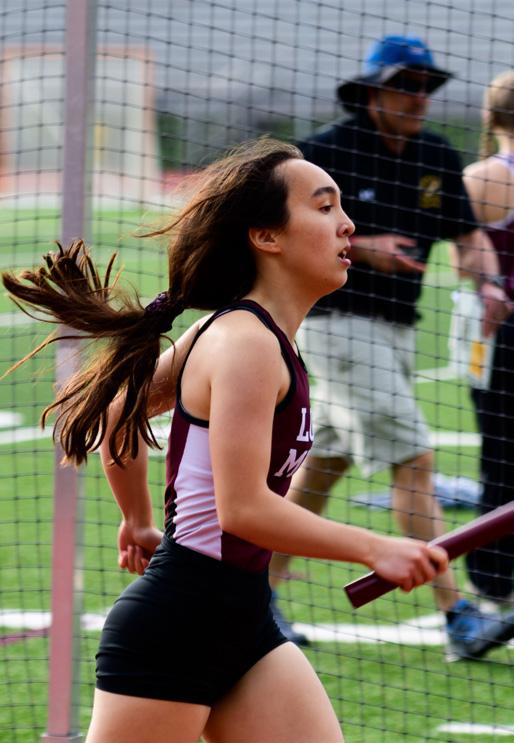
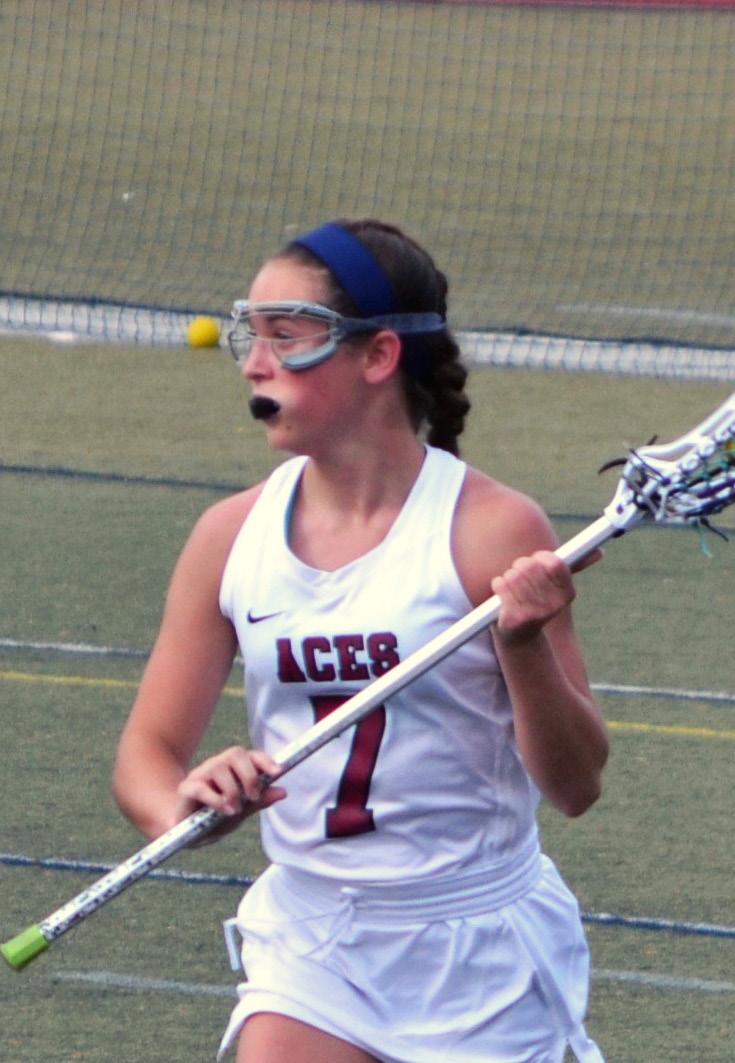
Senior Ella Harris What sport(s) do you play? Swimming and Lacrosse What is your greatest athletic achievement? Qualifying for states in the 200 medley relay for swimming What’s your favorite romantic comedy? 10 Things I Hate About You Who is your favorite president and why? Abraham Lincoln because he carried the US through the civil war and abolished slavery Photo courtesy of Ella Harris ’20







